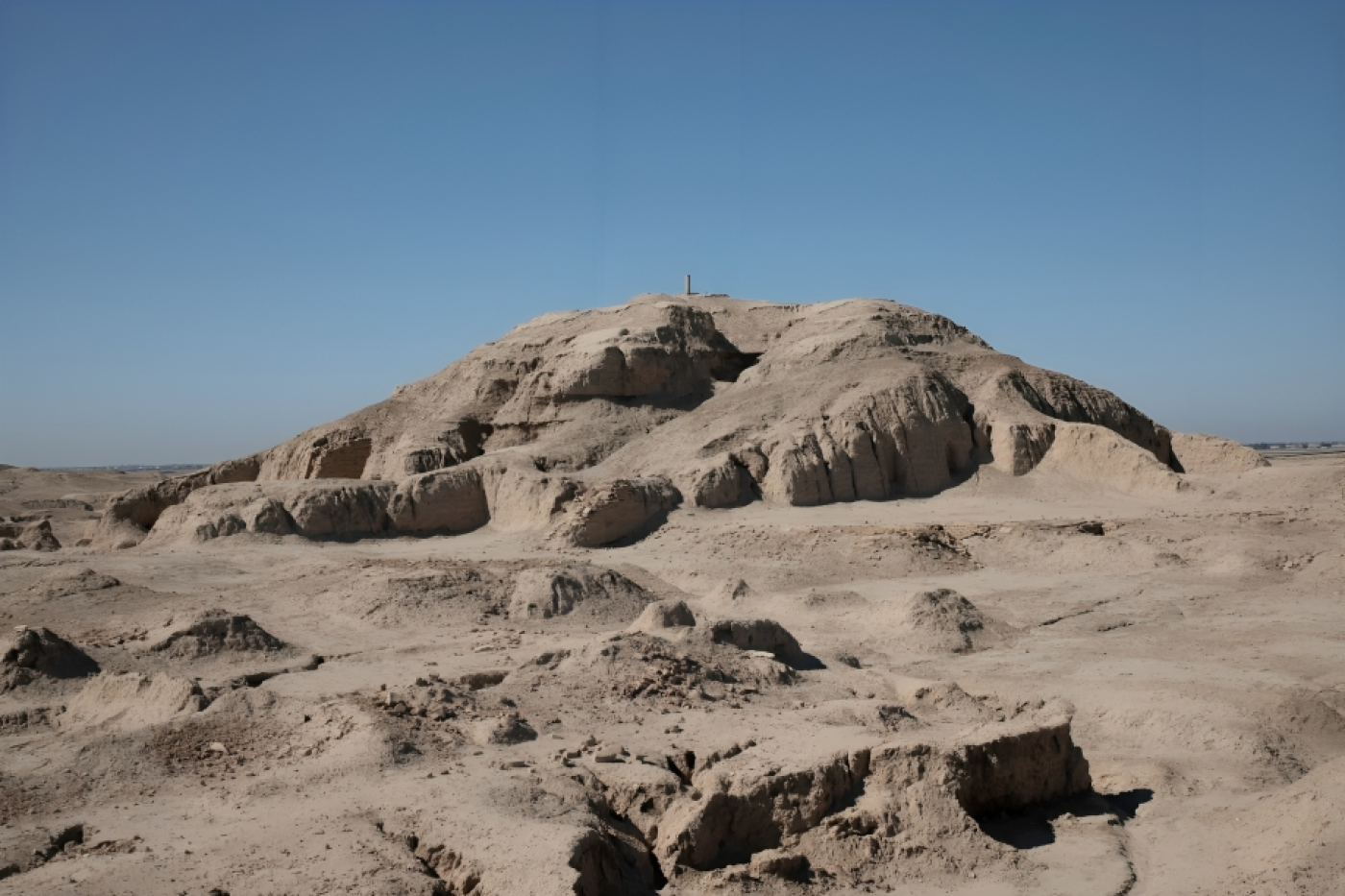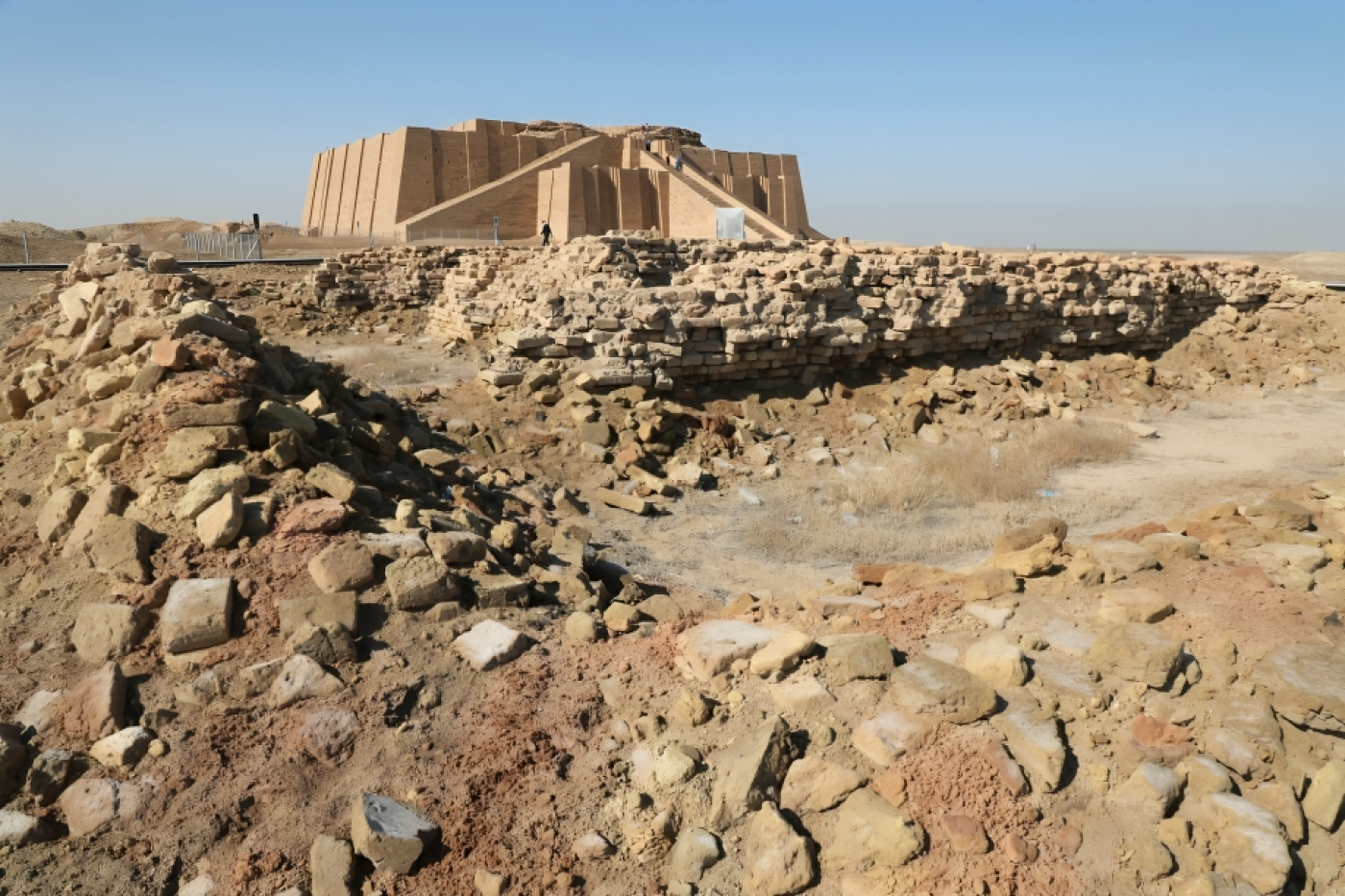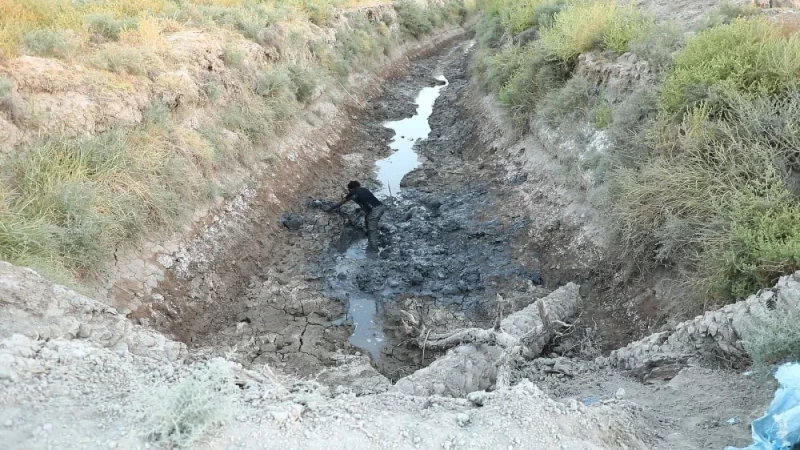THI QAR, Iraq - The security challenges that once haunted archaeological sites in southern Iraq, including Thi Qar, diminished during the security void post-2003. The delineation of boundaries and the deployment of security patrols contributed to alleviating these challenges. However, a new peril has surfaced, one immune to military intervention – climate change.
This environmental force is currently exerting adverse effects on these millennia-old historical sites.
According to experts in the field of archaeology, the effects of increasing temperatures, wind, and rainfall on these archaeological sites have become evident.
They have voiced concerns about the ongoing occurrence of these phenomena without intervention, warning of the potential extinction and collapse of these sites.
During an interview at his government office with The New Region, Shamil al-Rumaidh, the Comprehensive Inspector of Antiquities in Thi Qar, emphasized the direct influence of climate change on archaeological landmarks.
He highlighted sandstorms and rainfall as primary factors, particularly noteworthy given that numerous archaeological sites lie along the path of northward-moving sand dunes in "al-Katia" region of Thi Qar Governorate.
Rumaidh elaborated that erosion factors have led to significant alterations in the Ziggurat of Ur over the past millennium. Its original height of 26 meters has dwindled to approximately 16 meters, shrinking at a rate of roughly one meter every 200 years.
As temperatures rise and weather patterns become more extreme, the erosion effects worsen.
Located approximately 10 kilometers west of Nasiriyah, the Ziggurat directly confronts winds laden with sand particles, exacerbating its degradation.
In light of these challenges, the Ministry of Culture, Tourism, and Antiquities has recently earmarked a budget of 3 billion dinars for maintenance purposes, focusing on repairing cracks and deteriorating bricks.
There is ample evidence indicating that burial sites are feeling the impact of shifting sand dunes, particularly evident in portions of the Larsa archaeological site located in the Rafai district, north of the governorate.
Seasonal excavation efforts conducted by a French archaeological mission have unveiled the daunting reality: during excavation periods lasting one to two months, the depth of sand accumulation can reach up to 3 meters, underscoring the ongoing battle to safeguard these invaluable historical artifacts.
Among the array of notable archaeological sites currently under excavation, several are grappling with the adverse effects of wind erosion. These include Tal al-Awaili, Aridu, Tal Jokha, and the city of Uma.
Aqeel Al-Mansrawi, an archaeologist with the inspectorate, shared insights with The New Region, detailing his firsthand monitoring of sites impacted by sand dune activity.
He assessed their susceptibility and future threats, underlining the urgency of addressing these challenges.
"In southern Iraq, particularly in Thi Qar, there are significant sites and cities that could be completely engulfed within the next 15 to 20 years,” Mansrawi said. “This is deeply concerning for us archaeologists, given that these prominent archaeological sites are predominantly made of clay, rendering them highly vulnerable to the direct effects of sandstorms, moisture, and salt, all of which can compromise their structural integrity."
Mansrawi pointed out key sites like Umm al-Aqarib and Tal Shumayth within the archaeological complex of Uma.
Situated along the sand dune belt, these sites face heightened vulnerability due to wind activity. While rain contributes to adverse effects such as wall cracks in uncovered structures, it also offers a silver lining by fostering vegetation growth near these locations, which could help mitigate sand displacement.
In a conversation with The New Region, Qahtan al-Husseini, the Project Manager overseeing the Sand Dunes in Thi Qar, underscored the widespread impact of desertification across the region.
Husseini highlighted that desertification spans from Qadisiyyah and Muthanna to Thi Qar, with the latter bearing the brunt of its effects.
While Qadisiyyah and Muthanna experience lesser impact due to western wind patterns, Thi Qar faces significant challenges, particularly during the summer months.
The increased wind movement in Thi Qar carries sand particles that not only pose health risks, leading to respiratory diseases among residents but also contribute to the annual expansion of desertification.
The situation has escalated to the extent of causing damage reaching Kuwait. To address these pressing concerns, the Iraqi government, in collaboration with Kuwait, has established a joint committee tasked with visiting the affected sand dunes, assessing the current situation, and coordinating efforts to combat desertification.
According to Rahim Adnan, a professor of geomorphology at the College of Arts, University of Thi Qar, an estimated 1,600 square kilometers comprise the most severely affected region by sand dunes.
This area experiences heightened intensity due to factors such as increased dryness, water scarcity, and diminished vegetation cover.
Wind erosion, compounded by rainfall, further exacerbates the situation by sculpting slopes, grooves, and water pools that are challenging to mitigate, ultimately resulting in the fragmentation of archaeological sites.
Archaeological researcher Amir Doushi, speaking to The New Region from his office, emphasized that the foremost threat currently looming over archaeological sites is climate-related, surpassing the previously predominant security concerns.
He highlighted that the majority of risks facing archaeological sites are attributed to irregular farming, constituting 23 percent.
Many farmers are unaware that these are archaeological sites that have not been excavated. The second most significant threat is security, accounting for 20 percent of risks, followed by irregular development at 16 percent, sand dune risks at 16 percent, and floods at 16 percent, with other risks also being identified.
Doushi further noted that one of the risks looming over the Ziggurat of Ur is its proximity to the construction site of Nasiriyah International Airport.
Addressing such risks typically requires collaborative efforts from the government, underscoring the need for the establishment of a dedicated body tasked with studying and promptly addressing these issues.



 Facebook
Facebook
 LinkedIn
LinkedIn
 Telegram
Telegram
 X
X


